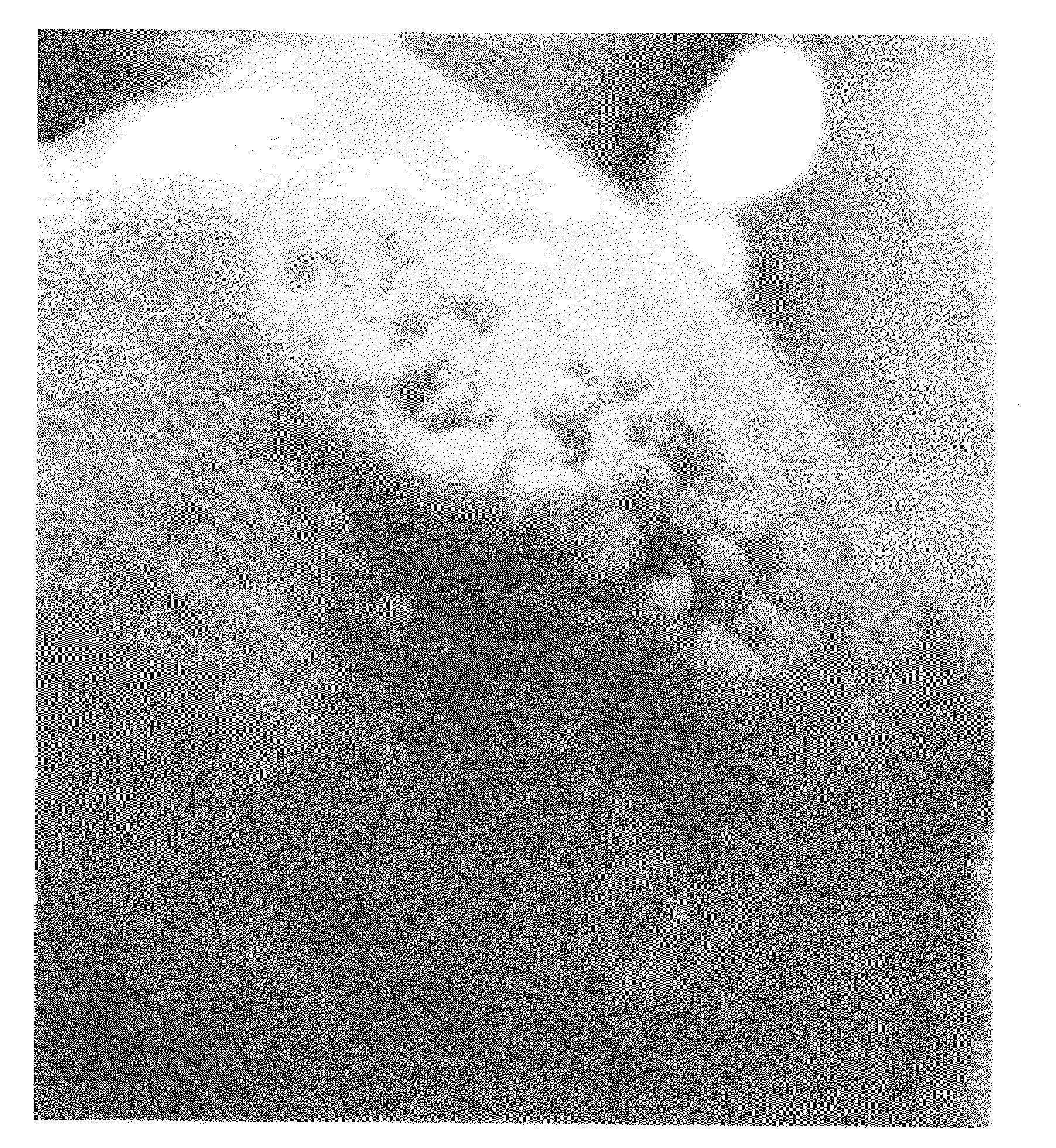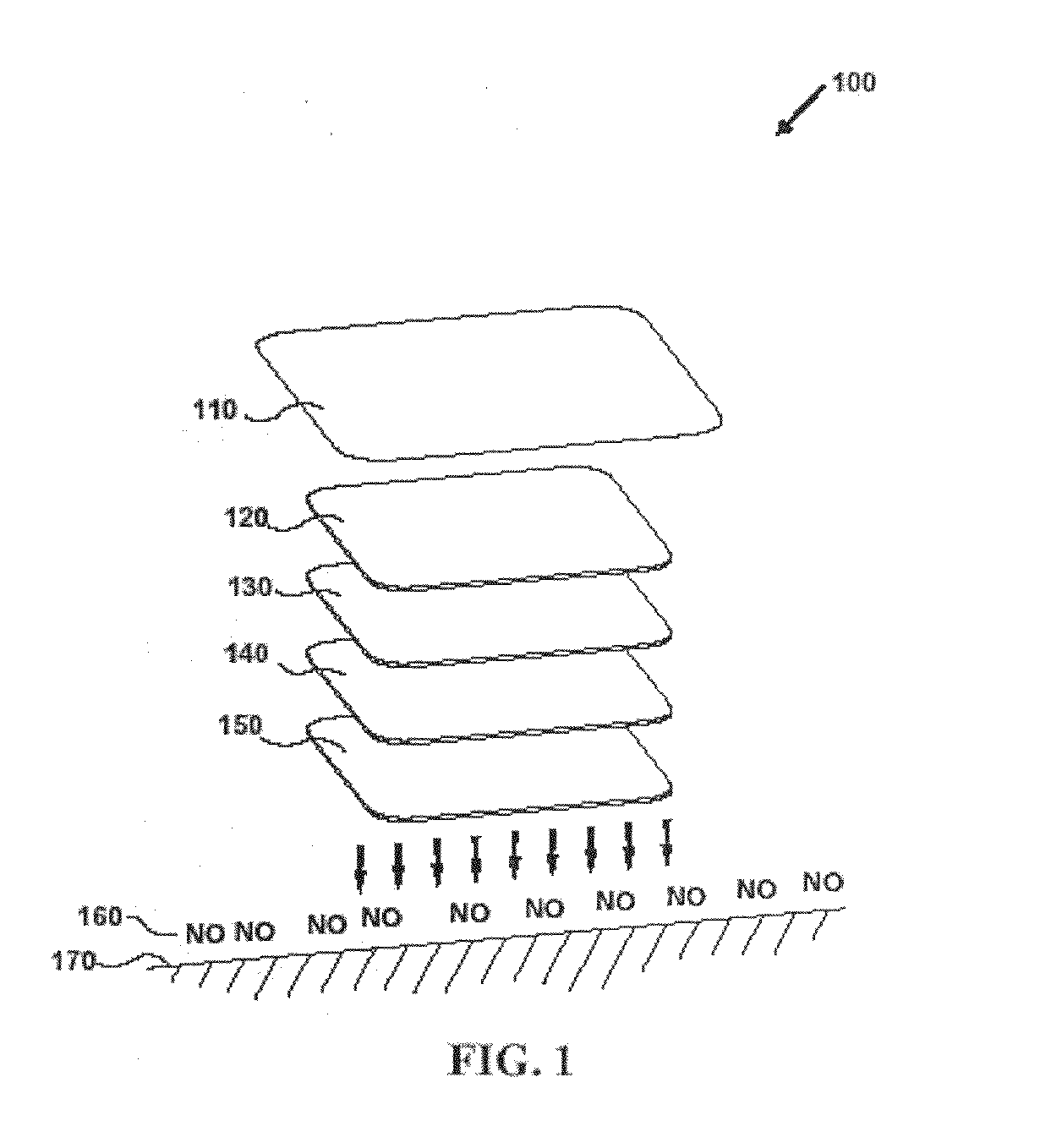Debridement Method Using Topical Nitric Oxide Donor Devices and Compositions
a nitric oxide and donor device technology, applied in the field of transdermal patch devices, can solve the problems of enzymes not being applied to healthy tissue, pain in surgical and mechanical procedures, and normal and necrotic tissues, so as to facilitate the removal of necrotic skin and loosen the necrotic wound tissu
- Summary
- Abstract
- Description
- Claims
- Application Information
AI Technical Summary
Benefits of technology
Problems solved by technology
Method used
Image
Examples
example 1
Formulation of a Topical Nitric Oxide Delivery Cream
In one embodiment, a first component is prepared by dissolving 3.0 grams of PLURONIC® polymer in 12 mL of ice cold water. Vitamin C (14 mg) is dissolved slowly in 3 mL of the ice cold PLURONIC® F-127 solution. The solution can be stored in a 5 cc disposable syringe. A second component is prepared by mixing 30 mg of ion exchange resin having nitric oxide-forming groups with 3 mL of ice cold PLURONIC® solution. This solution can be stored in a separate 5 cc disposable syringe. The compositions can be used by mixing the two reagents and applying the mixed ingredients to the wound.
example 2
Preparation of 10 μmolar Multilayer Electrospun Polymeric Transdermal Patch
In this example, a device of the present invention is fashioned from the following materials: hydrophilic (TECOPHILIC®) polymer solution (11.7%), nitric oxide-forming ion exchange resin (400 mesh size), microcrystalline stabilized vitamin C, an absorbent polymer, and absolute ethanol (200 proof).
In this example, fibers are electrospun using the following assembly: a metal cone (No. 2 with 1.5 mm opening) as a polymer solution reservoir, a metal collector for the collection of polymer fiber, and a 25 KV power supply. According to this example, the gap distance between the reservoir cone and metal collector is about 32 to 35 cm. However, one of skill in the art will recognize that the present invention is not limited to a gap distance within this range inasmuch as other gap distances will be appropriate depending on a variety of factors including variables related to the apparatus, electrospinning materials, co...
example 3
Preparation of 25 μmolar Multilayer Electrospun Polymeric Transdermal Patch
In this example, the materials and electrospinning conditions are the same as set forth in Example 2. As in the previous example, the bottom layer contacts the wound, and is fabricated by electrospinning fibers from a solution. The bottom layer is fabricated from a solution comprising about 7.5 grams nitric oxide-forming ion exchange resin, about 10.0 grams of TECOPHILIC® polymer solution, and about 4 to 5 mL of absolute ethanol. A solution for fabricating the second layer comprises about 1.5 grams of an absorbent polymer, about 10.0 grams of TECOPHILIC® polymer solution, and about 4 to 5 mL of absolute ethanol. Finally, a solution for fabricating the top layer comprises about 7.0 grams of microcrystalline stabilized vitamin C, about 10.0 grams of TECOPHILIC® polymer solution, and about 5 to 6 mL of absolute ethanol. As in the previous example, this device can be used by either wetting it with water and apply...
PUM
| Property | Measurement | Unit |
|---|---|---|
| time | aaaaa | aaaaa |
| gap distance | aaaaa | aaaaa |
| physical | aaaaa | aaaaa |
Abstract
Description
Claims
Application Information
 Login to View More
Login to View More - R&D
- Intellectual Property
- Life Sciences
- Materials
- Tech Scout
- Unparalleled Data Quality
- Higher Quality Content
- 60% Fewer Hallucinations
Browse by: Latest US Patents, China's latest patents, Technical Efficacy Thesaurus, Application Domain, Technology Topic, Popular Technical Reports.
© 2025 PatSnap. All rights reserved.Legal|Privacy policy|Modern Slavery Act Transparency Statement|Sitemap|About US| Contact US: help@patsnap.com



